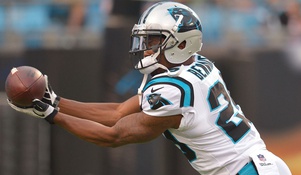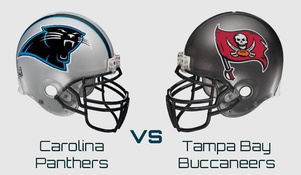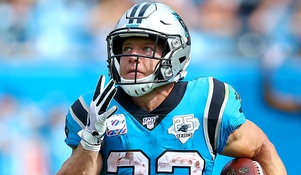How To Win on Fanduel

A lot of people have different strategies for how to play and win on Fanduel. Some are successful, many are not. I have my own strategy that I use for each sport that has been over 75% successful and helped me to win over $3,000 on Fanduel playing mostly head-to-head matchups (80% head-to-head games, 20% tournaments). Here's how I construct each lineup, by sport.
NFL:
(1) QB/WR combo. This is a way to double your points easily, and should be something that you ALWAYS do in your lineups. Combine a QB and a WR from the same team, preferably a team with a favorable matchup for that week. Playing a combo will always help you maximize your points. In certain cases, you can insert a QB/TE combo if you don't like the WR options available for that QB.
(2) Match-ups. Always, always, always research matchups. Which RB are going up against soft run defenses? Which WRs are most likely to have favorable matchups against the opposing secondary?
(3) Kicker/Defense combo. This is a tactic that not a lot of people use, but I like to choose the kicker from the team of whose defense I am playing. I really to no "proven" reason for this, but I always do it, and more times that not, it works.
(4) Choose players from teams favored to win. Obviously players from teams that are favored to win, generally generate more points than players from teams that are underdogs. If you have a situation where you have two great wide receivers playing in the same game, more times than not, go with the WR whose team is favored to win. This include your defense, choose your defense based on teams that are favored to win.
(5) Never, EVER start a player that is playing against the defense you are playing that week.
MLB:
(1) Determine your pitcher. First and most important is to choose your pitcher. Obviously you want to choose a pitcher with a favorable matchup, and a pitcher that has the best chance to get a win (a win earns you 12 points on FD). You also want a pitcher that gets strikeouts at a high rate (each strikeout earns you 3 points on FD).
(2) Build your lineup backwards. Once you determine your pitcher, start at the backend of your lineup and work your way back. What I mean by this is, start in the outfield, this is where 75% of your power and speed will come from. Once you have your outfield set, focus on the right side of the infield (1B & 2B), this is where a lot of your production will come from, along with the outfield.
(3) Go conservative on catcher and shortstop. I always go very conservative on my catchers and shortstops. I like to have power in my outfield and at 1B and 2B, so you have to make very smart value plays (less than $2500) at catcher and shortstop. Generally this works because not a lot of offensive production will come from your shortstop, and if you can get 6-9 points from your catcher, you'll be in good shape.
(4) The Golden Rule. NEVER, EVER start a hitter against the pitcher you are starting. This should be a no brainer, but I have seen people do it, and it never works. Doing this will only negate points you get.
NBA:
(1) Center. I always, 100% of the time, choose my center first. Your center is going to give you a lot of production (rebounds, assists and points), when there is an elite center playing, be sure you have him in your lineup first, then build you roster around him.
(2) Shooting Guard. Shooting guards have the most upside generally in most games. They are going to get you points and rebounds. However when choosing a shooting guard, you don't always want to just go after the elite options, always look at matchups, a lot of times you can get a good shooting guard at great value.
(3) Starting Forward. To me, SF's are just as close production wise to center as you can get. SF will get you a lot of rebounds and points, they will also usually get you a few assists. I always try to go high end on SF's.
(4) Value at Point Guard. Especially if the slate is full of games, I really like to find value in my point guard positions instead of going elite. Point guards are going to give you the most production from their assist, find point guards that have a high assist to turnover ratio.






